
An Exclusive Interview with LINDSAY ADLER By Catalin CROITORU
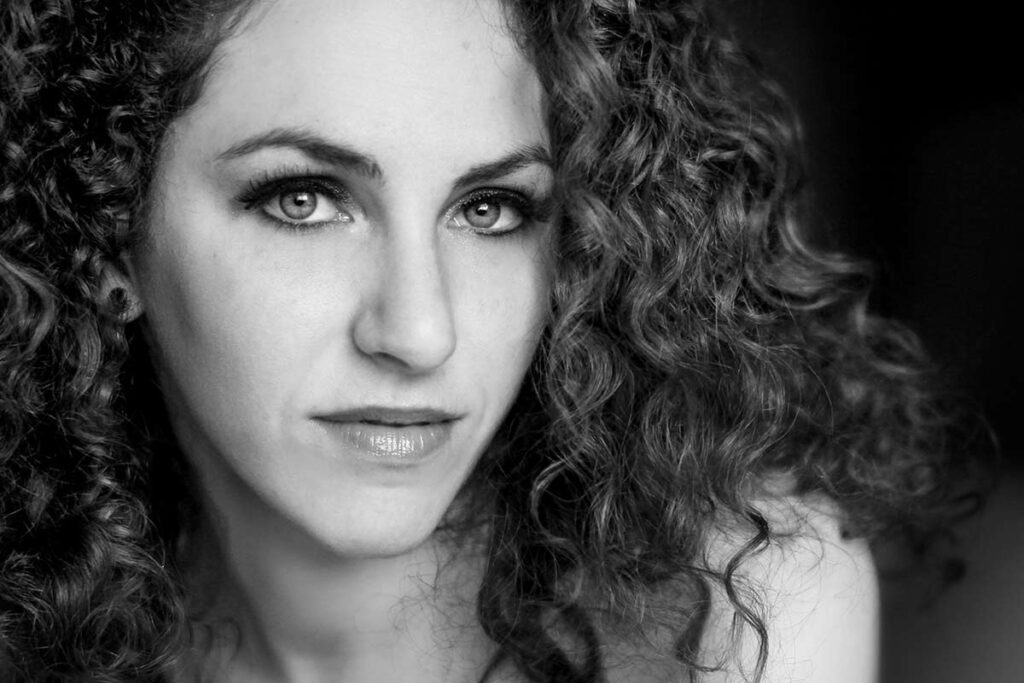
Her fashion images became iconic. Her style is unique. She has a special “bond” with the light, so that’s why every picture taken looks polished to absolute perfection. And she handled the cameras for more than half of her life.
If what was written above didn’t “ring a bell,” I will give you a clue: Lindsay Adler.
Lindsay can be defined as a fashion photographer, entrepreneur, author, and educator. She has already published five books, set up many tutorials to give “a helping hand” to the upcoming generations of photographers, and published thousands of images in various highly rated magazines. Her career in this “image-taking” art started at a very young age when other girls were still dressing and undressing their dolls.
Lindsay Adler is famous and has her own studio in Chelsea, New Your City. Her ascension in photography was a succession of trials and errors, even though seeing her published images is difficult to imagine!
But despite her fame and widely recognized success, she doesn’t call herself “a photographer”; Lindsay prefers to define herself and be seen by others as an image creator.
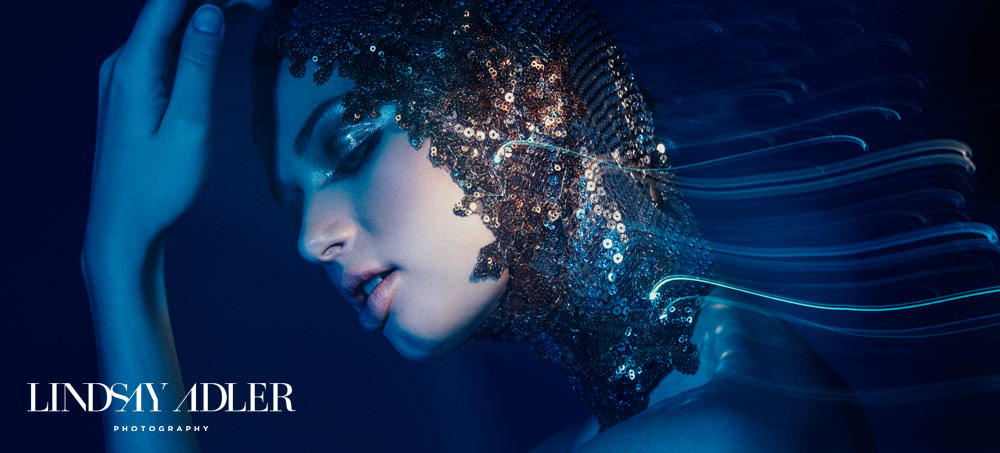
Lens Magazine: Thank you for accepting our invitation to a “chat”!
Whether related or not to the photography field, everybody knows who Lindsay Adler is. Unique portraits, sharp colors, a name linked to the fashion world, workshops, and tutorials are how we can define your work in a few lines.
But how is Lindsay Adler the human being after the studio lights are off, and the crew that placed all the reflectors and changed the backdrop went home? How are you simply Lindsay Adler and not the well-known photographer?
Lindsay Adler: As I’ve achieved stability and success in my life, the little things fulfill me. My life is a beautiful balance of the ‘everyday’ and the ‘exotic.’ While I may have a beautiful high-end shoot during the day, I am often excited to get home and just cuddle my dog.
I love traveling (more than a dozen countries in the last two years), but I also love wandering the streets of my home in NYC to appreciate what this delightful city offers.
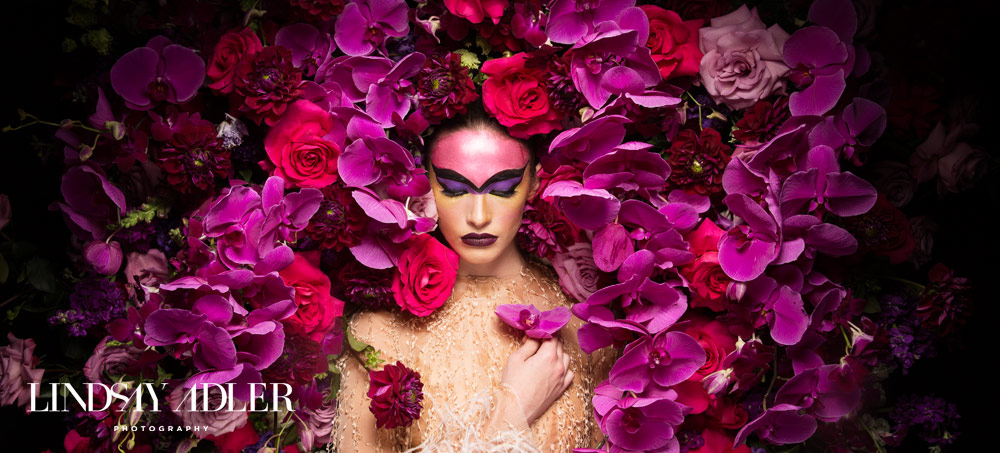
L. M.: Do you have a “bucket list” for the year that has just begun?
Lindsay Adler: This year, I have begun to shoot more imagery that appeals to cosmetic companies and makeup brands. In addition, I’ve crafted my portfolio and marketing message to appeal to these target clients.
L. M.: You definitely have “a clean, bold, and graphic style” in your pictures. Most of those pictures are fashion related. But did you ever picture kids?
Lindsay Adler: When I first started my photography business, I photographed everything. I spent years photographing families, babies, weddings, and more. It was an important time when I developed an ability to photograph ANYTHING that came my way. Now I have specialized and developed a style and niche, but I still have the skill set as a portrait photographer that allows me to adapt to any subject.
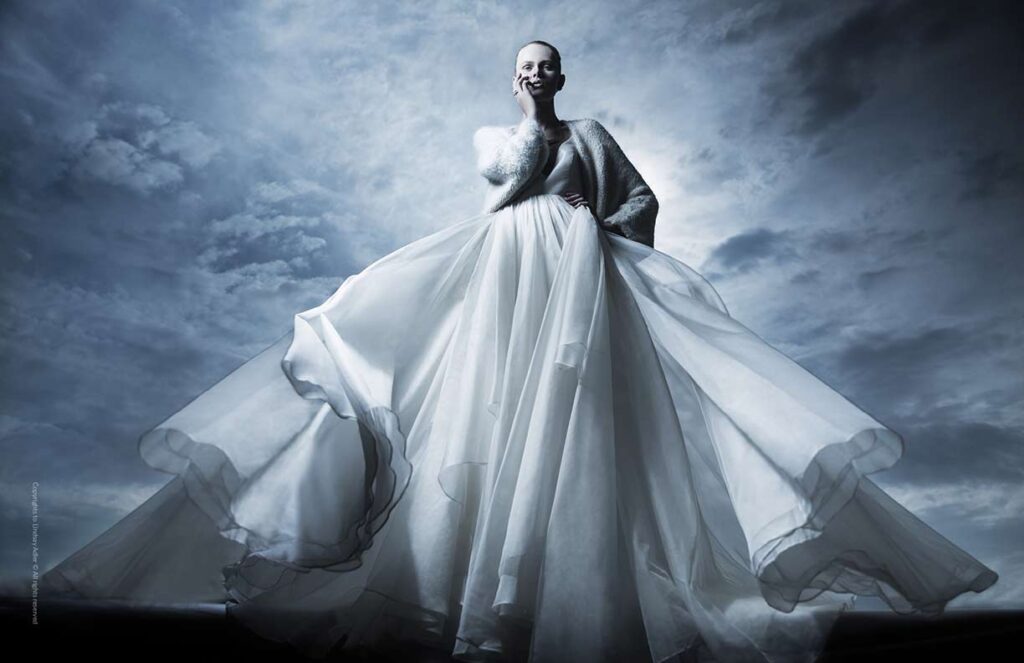
L. M.: Doing research about you, I have read that you picked up your first camera at the age of 12 and had your first picture published a year later; I have also found it fascinating when photography is a family tradition. What was about that first picture that started to make you famous? Please share with us the story behind it.
Lindsay Adler: My early work was nothing special. It wasn’t technically impressive or stylistically impressive. I was simply passionate at a young age, so I worked hard to learn as much as possible and practice as much as possible. I was lucky enough to have an encouraging family— many members of my family enjoyed photography as a hobby,
but I was the first to make it a career.
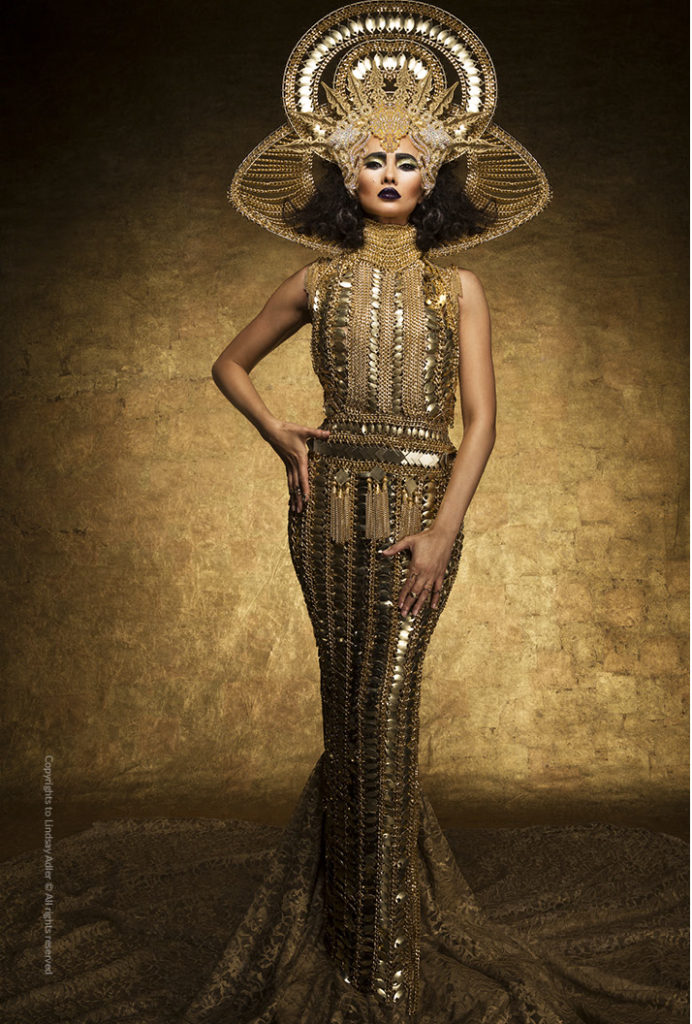
L. M.: Now your images are emblematic, and your work is published in magazines like “Marie Claire” and “Essence,” “Harper’s Bazaar” and “Elle” – just to name a few of them, randomly. Please tell us how you take such wonderful pictures on the sets. What is the process of an assignment for a famous photographer from the beginning to the end?
Lindsay Adler: Every shoot begins with the concept. What are the goals of this shoot? What should my images communicate? Every shoot begins with defining goals and styles, then building a mood board. A mood board is a collection of ideas that helps define the direction of the shoot. A good shoot is a balance of preparations and flexibility (the ability to adapt at the moment).
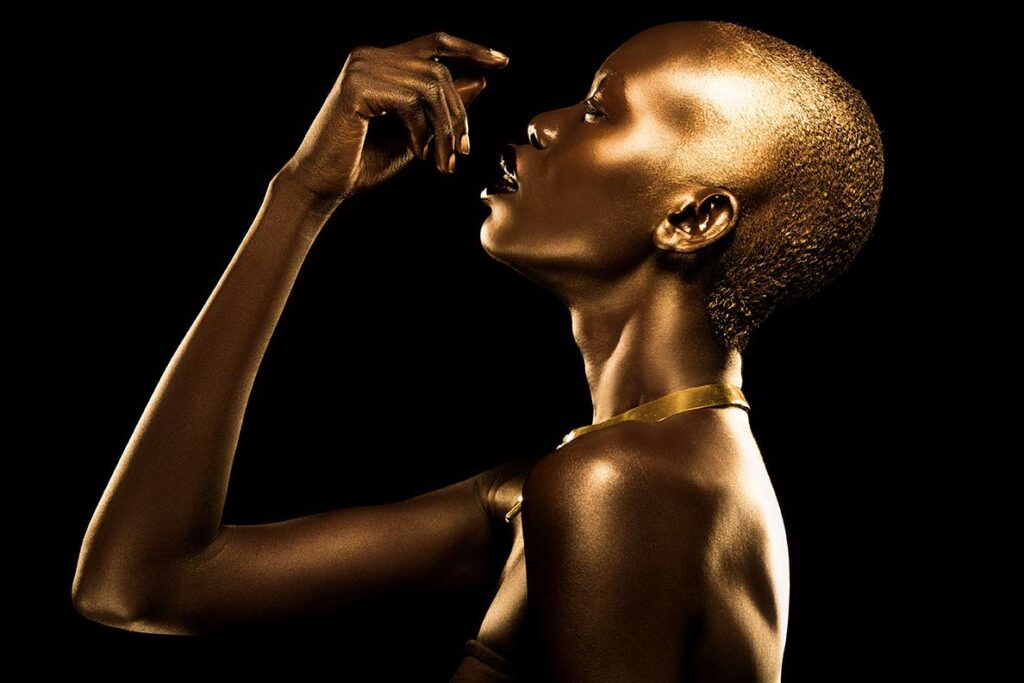
L. M.: What is in your bag, Lindsay? What cameras do you use, and what lenses help you to achieve such perfection?
Lindsay Adler: Canon 5D IV, Canon 24-105mm 4.0, Canon 180mm macro.
L. M.: Your pictures are just perfect out of the camera? Do you use any software to “polish” your images after the studio work is done?
Lindsay Adler: Nearly every image you see of mine is retouched. Retouching is an important part of the creative process. I achieve the final result through both Lightroom and Photoshop.
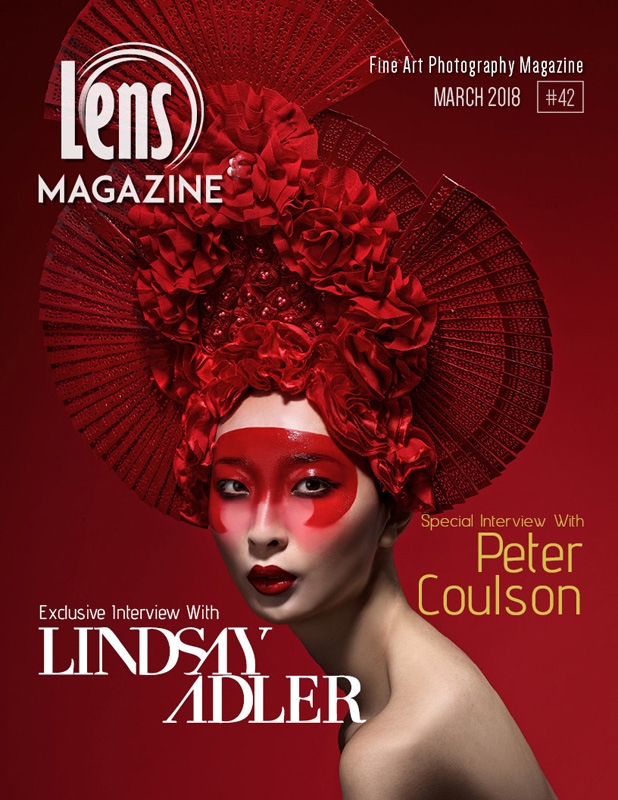
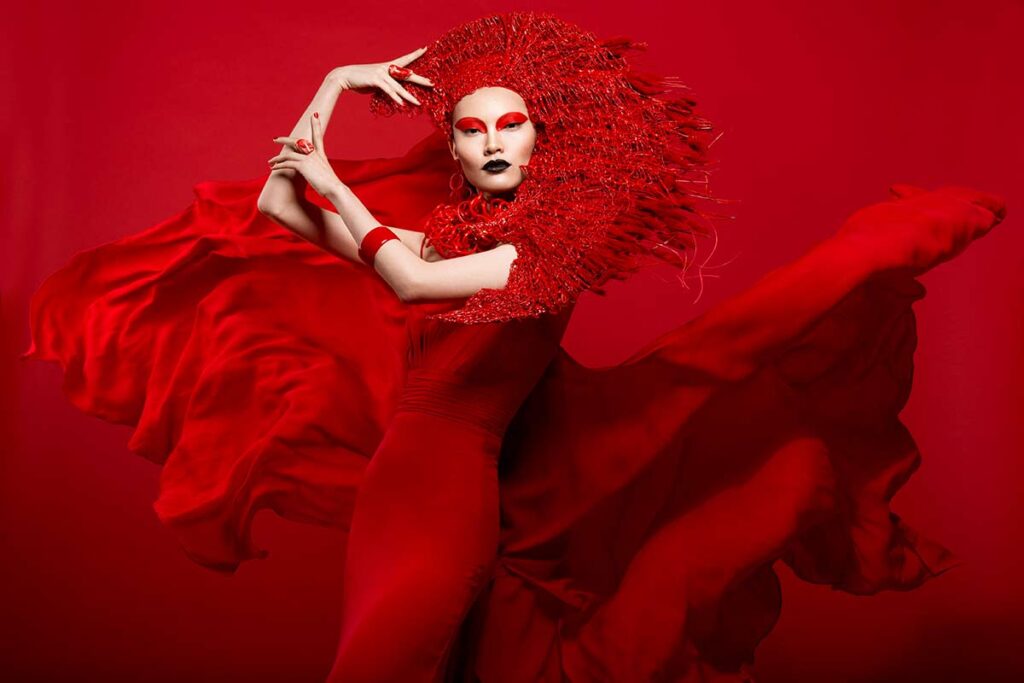
L. M.: According to you – what makes a “good photographer”? Is it the vision, is it the sharpness of the image, is it the chance…?
Lindsay Adler: A defined voice and style is what makes a great photographer. A ‘good’ photographer can just be a technical competency— but that is just the baseline. A clear vision, voice, and style are what make a photographer memorable.
L. M.: Let’s pretend at a certain moment you will decide – out of the blue – to drip down this career in photography. Hypothetically… Which way would you go then? What path would you choose instead?
Lindsay Adler: I have no second plan— it’s always been photography!! I think perhaps some sort of visual marketing, but I’m not sure!
L. M.: You are teaching people through your workshops and your video tutorials on the Internet. Why do you do that for? What is the reason for teaching others about photographic art?
Lindsay Adler: I teach to help others become better at their craft and be able to better pursue their passion.
I am blessed to be able to have a job and a life that I love, and I want to help others to do the same. I also find that when I teach, I become a better photographer. When I have to explain what I’m doing and thinking, I understand my craft at another level.

L. M.: What would be your advice for a rising fashion photographer? What would you teach him or her about this industry?
Lindsay Adler: As artists, our work is a reflection of ourselves. We put pieces or all of ourselves into our work. That is why rejection feels so debilitating to many of us artists. We often feel like failures when we hear critique, criticism, or rejection.
At least, that is how many of us feel, particularly as we start our journey as artists. I know I used to feel this way, and at times that tinge of rejection is still painful to bear. Early on in my career, I heard some brutal criticism of my work.
I regularly would send my shoots to 200 magazines and not get a single acceptance of my images. In fact, I had worked professionally as a photographer for years when one editor told me that every image in my portfolio should be scrapped as garbage. Rejection felt like a failure. Even more than a dozen years into my career, I can still get brutal critiques and have my work turned down by major companies. This rejection used to feel crippling.
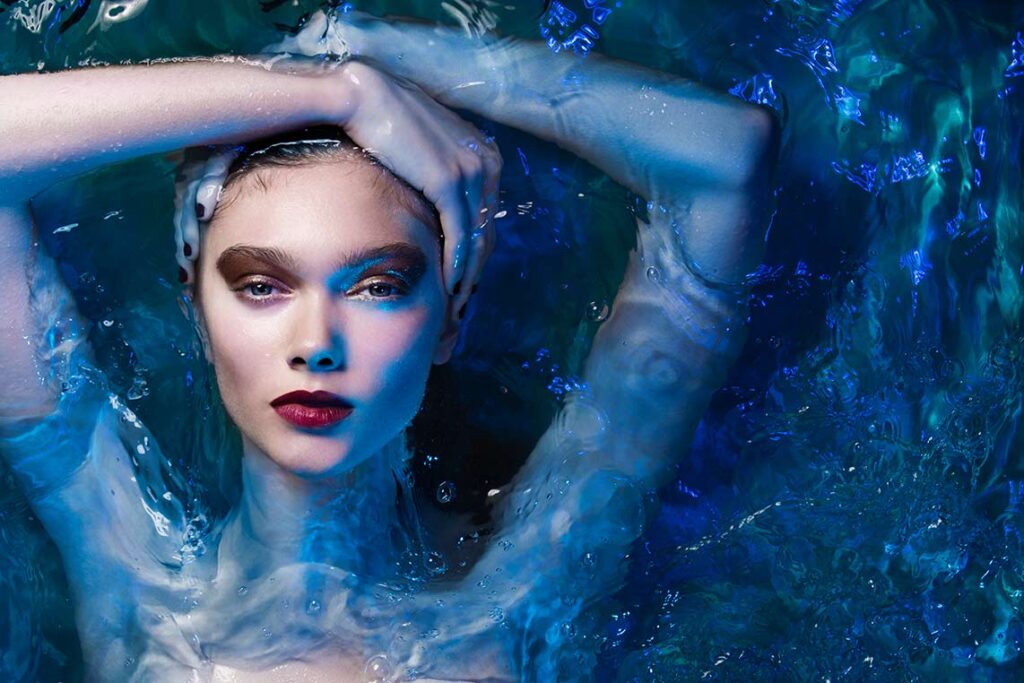
One thing I have learned in my years of photography is that rejection is not a failure, and the way to hurt your career the most is to let rejection hold you back from sharing your work or prevent you from producing with all your heart and soul.
I found there are many reasons I have been rejected. Perhaps my work didn’t fit with that particular client. Or maybe it just wasn’t the ‘right time,’ and the company wasn’t looking to work with a new photographer. Or maybe, my work actually was weak, but I have a great deal of room for improvement. Negative feedback shouldn’t destroy us or tear us down, but instead, help us find ways to build up and be stronger.
Pay attention to where the criticism or rejection is coming from. Sometimes it is by the cruel of heart, knowing it will hurt you. Others are from experts, simply trying to help you grow. Learn that rejection is just part of being an artist and a professional, and don’t let it cloud your mind. Even the most successful artists in history have been rejected, often. Yet, their resilience is why we know them today.
The more you put your work out there, the more opportunities you will be creating for yourself. Even if your work is exquisite, opportunities don’t come knocking at the door. People don’t beg to hire you. You have to create the demand; you have to get your work in front of more eyes to create more opportunities. The more you share your work, the more you will come across rejection, but at the same time, you are creating more opportunities. You create your ‘lucky break’ by pushing past the pain of rejection until you find those prize opportunities that change your career. Rejection isn’t a failure, so don’t allow rejection to force you to fail.


